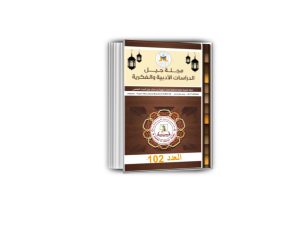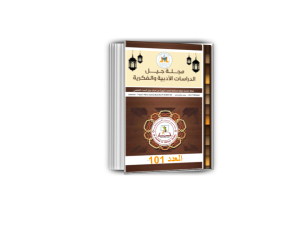
مصارعة الثيران في الأندلس؛ حكمة الأوّلين تحفظها الكورّيدا
Bullfighting in Andalusia: The Wisdom of the Ancients Preserved by the Corrida
لوصيّف رحومة/المعهد العالي للدراسات التطبيقيّة في الإنسانيّات، سبيطلة-جامعة القيروان، تونس
Loussaif Rahouma – Higher Institute of Applied Studies in Humanities of Sbeitla – University of Kairouan, Tunisia
مقال منشور في مجلة جيل الدراسات الأدبية والفكرية العدد 98 ص 65.
مستخلص:
لا تزال مصارعة الثيران في الأندلس تحتل مكانة رمزية وروحية تفوق حتى الألعاب الأولمبية، إذ تُعدّ طقسًا عريقًا متجذرًا في أعماق الحضارة الإنسانية، ليست مجرد رياضة أو عرض ترفيهي، بل هي فعل رمزي يجسّد صراع الإنسان مع قواه الداخلية، وفي مقدمتها الغريزة والهيجان، حيث يظهر الماتادور في مواجهة الثور رمزًا للفحولة والقوة والخصوبة. يعود أصل هذه الممارسة إلى حضارات شرقية قديمة، كسومر وفينيقيا، ويُعتقد أنها وصلت إلى شبه الجزيرة الإيبيرية قبل الفتح الروماني والعربي، وهو ما تعضده دلالات أسماء بعض المدن مثل “غرناطة” ذات الجذر السومري.
في النهاية يتماهى الماتادور مع الثور، في رقصة تجمع النقيضين: العنف والرقة، الذكورة والأنوثة، الحياة والموت، هكذا تتجاوز مصارعة الثيران كونها مجرد عرض دموي لتغدو طقسًا وجوديًا وفلسفيًا، يعكس جوهر الإنسان الأندلسي الباحث عن التوازن والخلاص والخلود.
الكلمات المفتاحية: مصارعة الثيران، الأندلس، الكوريدا، الرموز الحضارية، الثور، الفحولة، الخلود، الماتادور، الصراع الداخلي، الثقافة الأيبيرية، جذور سومرية.
Abstract: In Andalusia, bullfighting continues to hold a symbolic and spiritual significance that surpasses even the Olympic Games. It is not merely a sport or an entertaining spectacle, but rather a deeply rooted ritual in the fabric of ancient human civilization. Bullfighting embodies a symbolic act reflecting the internal struggle of man, particularly with instinct and impulse, as the matador confronts the bull—a representation of virility, strength, and fertility. This practice traces its origins to ancient Eastern civilizations such as Sumer and Phoenicia and is believed to have reached the Iberian Peninsula prior to Roman and Arab influence, a claim supported by the etymological roots of cities like “Granada,” derived from the Sumerian “Jernatha,” meaning “shining sun.”
Ultimately, the matador merges with the bull in a dance of opposites—violence and grace, masculinity and femininity, life and death. Thus, bullfighting transcends its bloody appearance to become an existential and philosophical rite that reflects the Andalusian soul in search of harmony, redemption, and immortality.
Keywords: Bullfighting, Andalusia, Corrida, Cultural Symbols, Bull, Virility, Immortality, Matador, Inner Conflict, Iberian Culture, Sumerian Roots.


